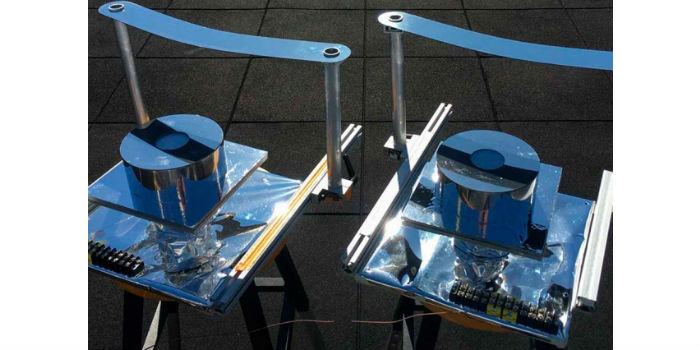 United States. MIT researchers have devised a new way to provide cooling on a hot, sunny day, using low-cost materials that don't require energy generated by fossil fuels.
United States. MIT researchers have devised a new way to provide cooling on a hot, sunny day, using low-cost materials that don't require energy generated by fossil fuels.
The passive system, which could be used to complement other cooling systems to preserve food and medicine in hot, isolated places, is essentially a high-tech version of a parasol.
The system allows the emission of heat in the range of mid-infrared light that can pass directly through the atmosphere and radiate into the cold of outer space, drilling through the gases that act as a greenhouse. To prevent heating to direct sunlight, a small strip of metal suspended above the device blocks the direct rays of the sun.
The new system is described in the journal Nature Communications in a paper by research scientist Bikram Bhatia, graduate student Arny Leroy, professor of mechanical engineering and department chair Evelyn Wang, physics professor Marin Soljačic and six others at MIT.
In theory, the system they designed could provide cooling of up to 20 degrees Celsius (36 degrees Fahrenheit) below room temperature in a place like Boston, according to the researchers. So far, in their initial proof-of-concept tests, they have achieved a cooling of 6 C (about 11 F). For applications that require even more cooling, the rest could be achieved through conventional cooling systems or thermoelectric cooling.
Other groups have attempted to design passive cooling systems that radiate heat in the form of mid-infrared wavelengths of light, but these systems have relied on complexly engineered photonic devices that can be expensive to manufacture and are not available for widespread use. say researchers. The devices are complex because they are designed to reflect all wavelengths of sunlight almost perfectly, and only to emit radiation in the mid-infrared range, for the most part. That combination of selective reflectivity and emissivity requires a multilayer material where layer thicknesses are controlled with nanometer precision.
But it turns out that similar selectivity can be achieved simply by blocking direct sunlight with a narrow strip placed at the right angle to cover the sun's path across the sky, which does not require active tracking by the device. Then, a simple device built from a combination of low-cost plastic film, polished aluminum, white paint, and insulation can allow the necessary emission of heat through mid-infrared radiation, which is how the most natural objects are cooled, while preventing the device from being heated by direct sunlight. In fact, simple radiation cooling systems have been used since ancient times to achieve night cooling; the problem was that such systems did not work during the day because the heating effect of sunlight was at least 10 times stronger than the maximum achievable cooling effect.
But the sun's heat rays travel in a straight line and are easily blocked, as we experience, for example, when entering the shade of a tree on a hot day. By shading the device essentially putting an umbrella over it, and supplementing it with insulation around the device to protect it from ambient air temperature, the researchers made passive cooling more viable.
A limiting factor for the system is moisture in the atmosphere, Leroy says, which can block some of the infrared emission through the air. In a place like Boston, close to the ocean and relatively humid, this limits the total amount of cooling that can be achieved, limiting it to about 20 degrees Celsius. But in drier environments, such as the southwestern U.S. or in many desert or arid environments around the world, the maximum achievable cooling could be much higher, he notes, potentially as much as 40 C (72 F).
While most research on radiative cooling has focused on larger systems that could be applied to cooling rooms or entire buildings, this approach is more localized, Wang says: "This would be useful for refrigeration applications, such as the storage of food or vaccines." Protecting vaccines and other drugs from deterioration in warm tropical conditions has been a major ongoing challenge that this technology could be well positioned to address.
Source: MIT.














